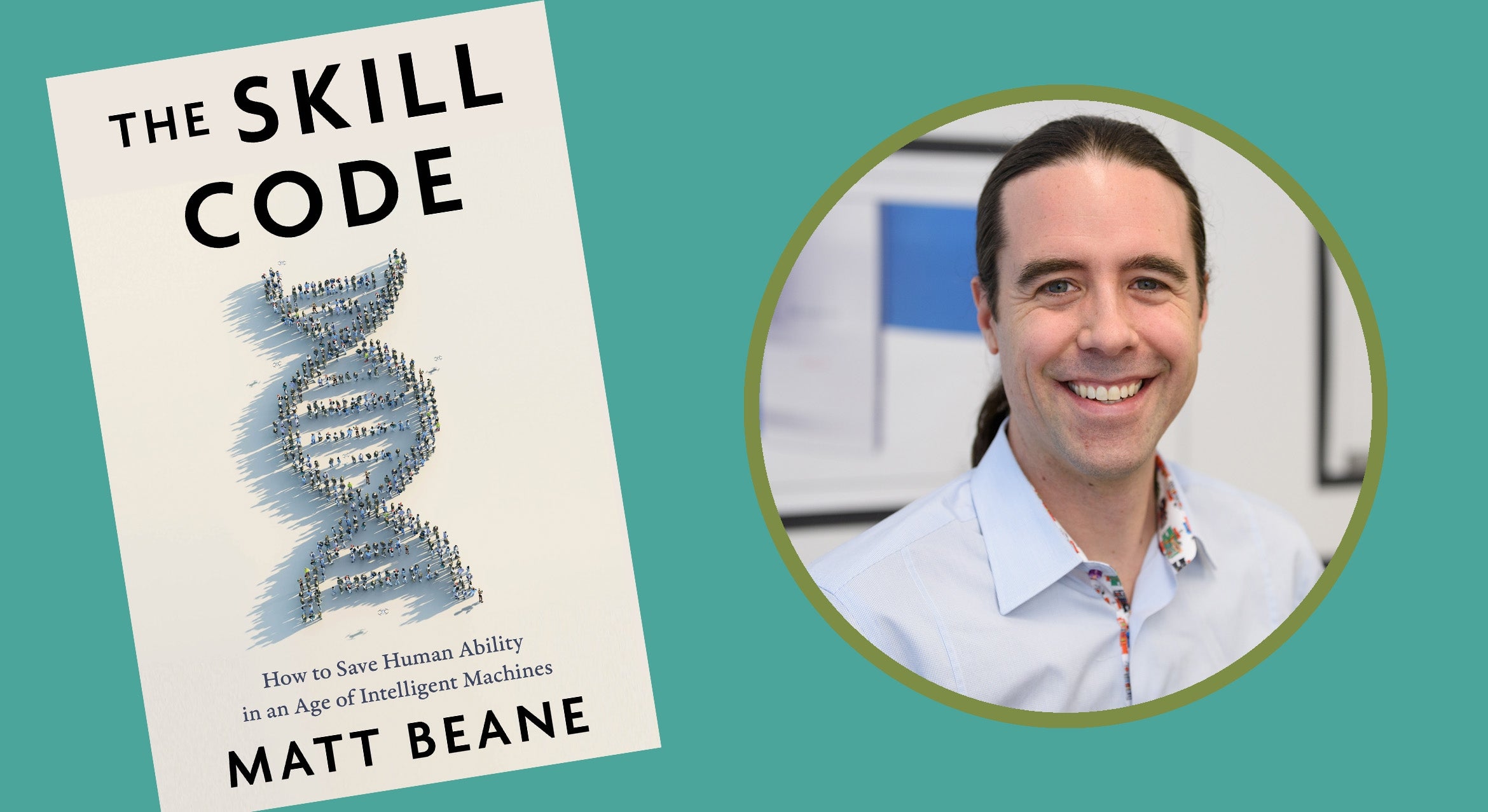
How to build and protect skills in our modern workplace, a world filled with AI and robots
Researcher and technologist Matt Beane, an assistant professor in the Technology Management Department at UC Santa Barbara, is calling attention to an immediate and hidden concern in the modern workplace — and offering a surprising path forward. In his new book, “The Skill Code: How to Save Human Ability in an Age of Intelligent Machines” (HarperCollins, 2024), Beane focuses on how our use of intelligent machines, like surgical robots and ChatGPT, is deeply weakening the master-novice relationship, the tried-and-true system in which a trainee masters new skills by working closely with a senior employee to gain essential knowledge and experience.
“Technology is not a threat, but how we are using it is. We’re getting more productivity from experts with intelligent technologies at the expense of novice involvement, which blocks their skill development,” said Beane, who defines skill as something a person can reliably do under pressure. “We need to flip the script and use technology as part of the solution and the new system for how we build skills.”
Beane has spent more than a decade examining work involving intelligent machines, such as robots and AI. His studies are designed to uncover systematic positive exceptions that can be used across the broader world of work. In one of his first projects, Beane spent hundreds of hours observing surgeries and conducting interviews at hospitals around the country to understand how surgical training was being affected by the introduction of robots.
“My research shows that the lead surgeon controls the robot, and the trainee has become completely optional, many times simply observing the procedure from another control console,” said Beane, noting the drastic change from the previous method where the surgical trainee assisted the senior surgeon throughout the procedure.
While intelligent machines offer hospitals and other businesses unprecedented improvements in efficiency and quality, Beane found that the speed at which technologies like these are being incorporated into the workplace has far outpaced the redesign of skill development for junior workers.
Beane discovered a small subset of trainees who were building skill despite these barriers — through a process he called shadow learning. Those trainees went to extreme lengths to find new ways of building skills, even if it meant skirting approved modes of training, such as performing patient rounds and attending lectures.
“People who became extremely competent in robotic surgery spent hundreds of hours watching videos of procedures on YouTube,” said Beane. “However, their mentors thought this was not effective or appropriate. One said to me ‘Watching movies doesn’t make you an actor.’”
Yet Beane’s data showed the contrary: certain video-review practices dramatically enhanced learning and were, in fact, necessary for skill progress given that novices could barely participate in actual surgery anymore.
The emerging issues in robotic surgery mirror those uncovered by Beane and other comparable research in more than thirty different professions, including warehousing, investment banking, bomb disposal and even content labeling for Chat GPT. Whatever their job — attorney, banker, surgeon, plumber — he has found that junior workers are being separated from experts in the workplace, which exacerbates our trillion-dollar problem of skilling and reskilling and prompts a few trainees to seek deviant methods to acquire skill anyway.
Challenge, Complexity, Connection
“I wrote my book because I felt like I had an obligation and a unique opportunity to dive into the research to find a common thread of training that workers were fighting to protect, regardless of the industry or technology,” said Beane, who is a regular contributor to publications such as Wired and MIT’s Technology Review. “It became clear in my own work and in surveying research across over a dozen disciplines that there were three basic components — challenge, complexity and connection — that are central to skill in any kind of work. These three C’s compose the DNA for how people build reliable skills.”
Beane refers to this DNA as the skill code, and explains it in-depth in his new book. He defines the first component of the skill code, challenge, as when a person is working near, but not at the edge, of their capability.
“They are struggling and could be performing better,” explained Beane. “But they’re also focused. That’s when we learn best.”
Complexity refers to our awareness of the broader circumstances and conditions that surround us while performing a task. Take, for example, the simple skill of using a clicker remote. As we master that task, we have a chance to understand what it is connected to — the clicker design or electronics, how it was manufactured, the presentation software, or even the worker who ordered it for us.
“If someone understands more of the moving parts involved with a job, they are more flexible and less likely to be surprised or to struggle when something unexpected happens, and they can move to new areas of interest. This is how we grow our careers,” he explained.
The third component, connection, refers to the bonds of trust and respect between a novice and an expert. Senior workers are more willing to grant access and independence to a junior worker if there is a connection, while the novice is motivated to build a bond and develop their skill set.
In addition to introducing and explaining the three C’s, Beane in his book provides a ten-point checklist for each item so that readers can assess their own work environments, determine what is and is not working, how the situation can be improved and how the work can be redesigned. As an example, Beane says that the leader of an organization could respond by finding ways to increase junior workers’ involvement in the workflow and provide opportunities for them to experience challenge, complexity and connection. In any organization, he notes, there are pockets where the three C’s are healthy. A leader can conduct what in management theory is called an appreciative inquiry, finding the bright spots and determining why they are working and how to scale them.
“The core function of the book is to give readers the knowledge to look at the health of skill development in their own context, and then take independent action,” said Beane, who started working on this book, his first, shortly after discussing his findings on a TED Talk that now has nearly two million views.
The book could also educate recent or soon-to-be college graduates on the work ecosystem and the need to fight for their skills in unprecedented ways, he added. Above all, Beane said he hopes that his book draws attention to the deep threat to the expert-novice relationship, as well as its importance, and to the need to develop a 21st-century infrastructure for apprenticeship.
“The information can be just as valuable for the expert as it is to a trainee, because being forewarned is forearmed,” said Beane. The book is now available to pre-order at major retail outlets, set for release on June 11.
Sonia Fernandez
Senior Science Writer
(805) 893-4765
sonia.fernandez@ucsb.edu




